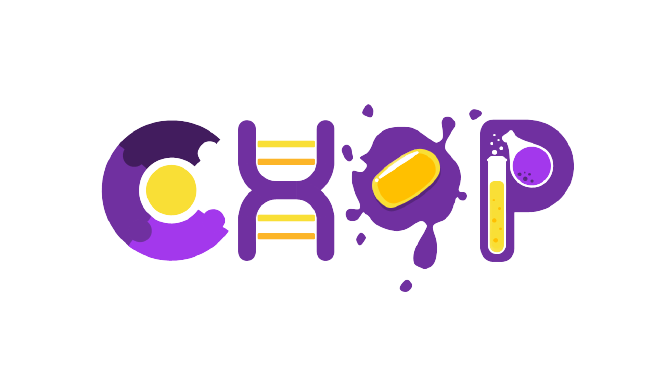Difference between revisions of "Part:BBa K4080008"
| Line 22: | Line 22: | ||
[[File:T--UBrawijaya--Result--TEVproteaseeCPX.png|thumb|center|<b>Figure 1.</b> Electrophoresis of inserts TEV protease-eCPX fusion with universal expression from optimization gradient PCR of 25 µL, resulting in 72°C as the optimal temperature for the annealing process with a DNA weight of 1463 bp and a thin other bands of impurities. Nanodrop = 53 ng/µL]] | [[File:T--UBrawijaya--Result--TEVproteaseeCPX.png|thumb|center|<b>Figure 1.</b> Electrophoresis of inserts TEV protease-eCPX fusion with universal expression from optimization gradient PCR of 25 µL, resulting in 72°C as the optimal temperature for the annealing process with a DNA weight of 1463 bp and a thin other bands of impurities. Nanodrop = 53 ng/µL]] | ||
| − | <b>Cells transformation with TEV protease fusion (kanamycin antibiotic screening)</b> | + | <b>Cells transformation with TEV protease fusion (kanamycin antibiotic screening)</b>. |
Competent cells with TEV protease fusion as one of the building parts of the main construct are transformed to BL21 and BL21(DE3) cells; this mechanism works under the T7 expression system, the different antibiotic with previous ones is used. | Competent cells with TEV protease fusion as one of the building parts of the main construct are transformed to BL21 and BL21(DE3) cells; this mechanism works under the T7 expression system, the different antibiotic with previous ones is used. | ||
[[File:T--UBrawijaya--Result--Petridish--TEVproteaseeCPX.png|thumb|center|<b>Figure 2.</b> The results of the 30 g/mL kanamycin antibiotic screening which had been diluted 10-5 to all the samples; Fig. 2A represents BL21 transformation with TEV protease-eCPX fusion with universal expression (constitutive promoter); Fig. 2B. Represents Transformation BL21(DE3) with pSB1K3 (insert with TEV protease in T7 expression system)]] | [[File:T--UBrawijaya--Result--Petridish--TEVproteaseeCPX.png|thumb|center|<b>Figure 2.</b> The results of the 30 g/mL kanamycin antibiotic screening which had been diluted 10-5 to all the samples; Fig. 2A represents BL21 transformation with TEV protease-eCPX fusion with universal expression (constitutive promoter); Fig. 2B. Represents Transformation BL21(DE3) with pSB1K3 (insert with TEV protease in T7 expression system)]] | ||
Latest revision as of 18:39, 21 October 2021
TEV protease-eCPX fusion with universal expression
This composite is using a constitutive family promoter and artificial terminator to enable expression under non T7 vectors. The feasibility of the experiment will be tested by overexpressing the TEV protease as a protein of interest and by utilizing the terminal display scaffold of eCPX that will localize the TEV on the outer membrane of the E.coli. This cassette system is one of two that will be working to generate a CHOP system. Characterization of two expression systems (between T7 and non T7) is measured to select the ideal blueprint for the CHOP system.
Introduction
|
UBrawijaya iGEM 2021 project CHOP systemis an outer membrane vesicle based protein overexpression system that includes three goals towards producing a blueprint for an ideal protein production system. This project can be customized because the system can be adapted with various proteins of interest, the overexpression system that can increase protein yield, and the clean harvest with simplified purification steps that is equipped with a protease enzyme expression mechanism in the concentrated system - from vesicles and cell pellets. |
This composite aims to know the feasibility of using a non T7 expression system for overexpressing the TEV protease, and by utilizing the terminal display scaffold eCPX will be localized on the outer membrane of the E.coli.
Usage and Biology
The eCPX scaffold in this system is under the control of a consensus constitutive promoter with strong RBS. The combination is used for high expression levels of proteins. eCPX is used because it has proven that the display rate of eCPX was improved relative to CPX and even higher than OmpX. Moreover, efficient eCPX allows for the potential to generate peptide libraries on each terminus [1]. The novel CHOP system created was based on a TEV protease-eCPX fusion with a general expression cassette designed to remove the fusion tag (TEV cleavage site) on amiCP-eCPX fusion. The existence of the TEV cleavage site as a cutting point for TEV protease and linker so that the developed system can be clean without any downstream processing. Afterwards, free amilCP acts as a reporter gene indicating that the CHOP system is working.
Result
The goal of this designed part is to express TEV protease through a constitutive promoter and translocate TEV protease across the cell membrane and out of the cell under OmpX signal sequence. As the initial to confirm the design gradient PCR is to be done.
Cells transformation with TEV protease fusion (kanamycin antibiotic screening). Competent cells with TEV protease fusion as one of the building parts of the main construct are transformed to BL21 and BL21(DE3) cells; this mechanism works under the T7 expression system, the different antibiotic with previous ones is used.

The influence of incubation time on competent cell growth. Finding out the optimum incubation time is important to manage the cell work in maximum capacity and ideal condition. The graph below shows the influence of incubation time on the number of different competent cells.

Reference
[1] Rice, Jeffrey J., and Patrick S. Daugherty, "Directed evolution of a biterminal bacterial display scaffold enhances the display of diverse peptides," Protein Engineering, Design & Selection 21, no. 7. Pp. 435-442, Jul.2008.
Sequence and Features
- 10COMPATIBLE WITH RFC[10]
- 12INCOMPATIBLE WITH RFC[12]Illegal NheI site found at 7
Illegal NheI site found at 30 - 21COMPATIBLE WITH RFC[21]
- 23COMPATIBLE WITH RFC[23]
- 25COMPATIBLE WITH RFC[25]
- 1000COMPATIBLE WITH RFC[1000]


